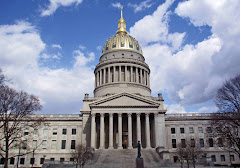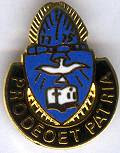Journey to a Land of Water Wind and Fire
Epilogue 1: Portland Oregon
Classically Chinese
Well, we finally did make it down from McKenzie Pass, and completed our circle route by arriving once more in Eugene, over 1000 miles after we started from there 10 days ago. The next morning we caught the 9:00 AM Cascades Train up to Portland. Our train back east didn’t leave until 4:00 P.M. but the way the schedules worked out, it was best to take this early train, plus it left us more time in Portland.
One of the really good features about Amtrak travel is that in most cities, Richmond VA’s Staples Mills Road station being one of the worst exceptions, when you arrive at the station you are in the heart of town already. And if you have a lay-over, as we did, you have options other than sitting in a straight-backed plastic chair attempting to read the latest novel, the newspaper, or even, horrors, papers from your place of business.
Instead you can check your bags (there is a fee per bag), and walk to a nearby “destination” and check it out. And that is what we did.
I had had a layover in Portland on 2 previous occasions (including the layover on the way out on this trip). Each time I/we had considered visiting the
Portland Classical Chinese Garden which is within easy walking distance of the station. But for various reasons I/we had not gone. But today would be different. So we checked our bags and off we went.
The Portland Classical Chinese Garden occupies an entire city block (about 40,000 square feet) that used to be a parking lot. The garden is the result of a Sister Cities agreement between Portland Oregon and
Suzhou China. Artisans from Suzhou came over and built this garden in downtown Portland, and in return, Portland gave Suzhou a Rose Garden (
Portland prides itself on its roses). Ironically, the rocks used in the garden (more on these later) were imported from the area around Suzhou China, but the plants were strictly American-grown descendents of Chinese plants that had been brought over many years ago. This is because of the strict agricultural importation requirements in place today.
I have been in Chinese (and Chinese-influenced) gardens before. When I was stationed in Korea back in the late 1960’s I visited several of the palaces in Seoul, and walked through their gardens. However, these visits were all in the winter, and, to be honest, everything in Korea was a bit ragged from a seasonal and an economic point-of-view at that time. Korea in the late 1960’s was just beginning to overcome the ill effects of having your front yard, your back yard, your kitchen etc. in the middle of a war zone with bombs, rockets, bullets, mines, runaway tanks etc. They had not yet produced their economic miracle (though evidences of its emergence were all around us). Accordingly, the palaces I visited, while public recreation areas, were not necessarily being kept up to the standards of a strict oriental garden.
More importantly, when we were in Vancouver BC about 4 years ago, A. and I visited the
Sun-Yat-Sen Garden in that city. Thus, we both had some

idea of what we would see in this garden. And this helped because often when an American goes to visit a “Garden” one expects to see lots of flowers such as these poinsettias at the
Phipps Conservatory in Pittsburgh.
 Then
Then again, one often expects to see certain total plant environments replicated, as in this steamy tropical forest at the
United States Botanical Garden in DC.
 And
And if the garden is outside, one often expects to see elaborate designs made using the plants as the materials, such as in the maze in the
Governor’s Palace gardens in
Colonial Williamsburg VA.
 But
But a Chinese Garden is a bit different.
It is composed of five elements. The first element is water, both still, as in this shot of Zither Lake in the Garden, and also in waterfalls.
The second, and most obvious component is “flowers” such as this lotus blossom. Flowers in a Chinese garden are chosen to provide the maximum

amount of beauty, the maximum amount of the time during the year. Further, they are often chosen with an eye towards whether or not they might be edible.
These two elements, water and flowers, are common in many western gardens. However, they are only the beginning of a Classical Chinese Garden.
 The
The third element of a Classical Chinese Garden is the presence of many rocks. Some of these rocks have been placed upright in this garden. They are called Tai Hu, and are from a particular limestone quarry located at a freshwater lake near Suzhou. They are considered especially auspicious due to their porous nature and their weight distribution. Now I must admit, having spent a lot of time in Greenbrier County WV, I have seen, touched, moved, got mad at, etc. many limestone rocks. I knew that for all their hardness when struck with a pick ax, or a drill bit, they are water soluble. That is to say, when exposed to water they will quickly erode. All of that said, I had never quite seen anything like the limestone rocks I saw standing in this garden.
 But
But not all the rocks are standing up in the garden. Many small river pebbles were laid out in intricate patterns to form the walk-ways that one uses as one strolls through the garden. There are several designs for these stones, only one of which is shown here.
The fourth element of a Chinese Garden is the architecture. A Classical Chinese Garden is noted for having many structures, such as the ones pictured in the first shot up above. This is because a Classical Chinese Garden was not only a place of beauty to visit, it was often considered to be an essential part of the home’s living space.
But it was not only that the Classical Chinese Garden has many structures, many American Gardens of late have been sprouting wooden decks, patios, gazebos and metal equipment buildings. In a Classical Chinese Garden it is important to consider the way in which these buildings were designed.
 One
One of the more prominent features in the buildings is the presence of “Leak Windows” as pictured in this shot. They received this name because they allow the beauty in the garden to leak through the wall into the adjoining space.
But there is more to this type of architecture than just windows. There are stone carvings on the walls, around the eves and even on the roofs. Also there is a generous use of wood, in furniture, and also in many elaborate carvings around the windows and sometimes on the walls.
 Finally,
Finally, and this is the 5th element, in a true Classical Chinese Garden there are literary inscriptions, such as seen on the two banners. These inscriptions are found at several places in the garden both inside the building and outside, on rocks, over the waterfall, and even hidden in amongst the plants. These inscriptions are pieces of Chinese poetry. The poems used are chosen with an eye towards deepening one’s experience of the garden.
All in all, we had a very delightful lay-over in Portland. It sure beat sitting around an airport reading a week-old magazine and eating greasy fast food.
 alongside the Silver Glen Spring. It was a beautiful spot and the spring was, well, pretty much like several other springs I have seen in Florida. The water was clear and appeared to have a blue-greenish, almost a turquoise, tint. It was warm enough that there were swimmers in the swimming area. I know that most people think about beaches and amusement parks when they think about Florida. But I would suggest that they need to be like the early Spanish Explorer, the purported “discoverer” of the place, Ponce De Leon and go searching for its springs. You may not find "a fountain of youth" but you surely will find some beautiful scenery!
alongside the Silver Glen Spring. It was a beautiful spot and the spring was, well, pretty much like several other springs I have seen in Florida. The water was clear and appeared to have a blue-greenish, almost a turquoise, tint. It was warm enough that there were swimmers in the swimming area. I know that most people think about beaches and amusement parks when they think about Florida. But I would suggest that they need to be like the early Spanish Explorer, the purported “discoverer” of the place, Ponce De Leon and go searching for its springs. You may not find "a fountain of youth" but you surely will find some beautiful scenery! ighlight of our time on the trail however, occurred about ½ out to Lake George. We had heard an unusual bird call, and had stopped for a moment. I was looking around attempting to locate the originator of the sound, when all of a sudden, a large brownish bird took flight from a nearby tree. As it became airborne, I saw the unmistakable white patches that mark the colororation of the American Bald Eagle. Of course it quickly flew away, but nevermind, I had been very close to it, the closest I have ever been to a Bald Eagle in the wild. It was an awesome sight.
ighlight of our time on the trail however, occurred about ½ out to Lake George. We had heard an unusual bird call, and had stopped for a moment. I was looking around attempting to locate the originator of the sound, when all of a sudden, a large brownish bird took flight from a nearby tree. As it became airborne, I saw the unmistakable white patches that mark the colororation of the American Bald Eagle. Of course it quickly flew away, but nevermind, I had been very close to it, the closest I have ever been to a Bald Eagle in the wild. It was an awesome sight. through a low marshy area and finally arrived at the shores of Lake George. Lake George is just one of many lakes that are located along the course of the St. John’s River. The St. John’s River, is, in reality, an ancient intracoastal lagoon system. As it flows northward along its 310 miles up through the eastern part of Florida, it enters and leaves several lakes. Because of this, it is often called “The River of Lakes.” Lake George is the 2nd largest lake in Florida (Okeechobee is the largest), and the largest of the lakes in the St. John’s system. Lake George is noted, among other things, for its bass fishing.
through a low marshy area and finally arrived at the shores of Lake George. Lake George is just one of many lakes that are located along the course of the St. John’s River. The St. John’s River, is, in reality, an ancient intracoastal lagoon system. As it flows northward along its 310 miles up through the eastern part of Florida, it enters and leaves several lakes. Because of this, it is often called “The River of Lakes.” Lake George is the 2nd largest lake in Florida (Okeechobee is the largest), and the largest of the lakes in the St. John’s system. Lake George is noted, among other things, for its bass fishing.











 worthwhile. Indeed it did. As you can see from the picture, during the period of time we were there the wings appeared to be spread. According to the
worthwhile. Indeed it did. As you can see from the picture, during the period of time we were there the wings appeared to be spread. According to the 




















 estimate it was probably as tall as a 4 or 5 story building above the floor of the Newberry Caldera. As I paused to look at it (that is Paulina Peak, our previous stop, in the background), I marveled. Then when I read some of the interpretative signs
estimate it was probably as tall as a 4 or 5 story building above the floor of the Newberry Caldera. As I paused to look at it (that is Paulina Peak, our previous stop, in the background), I marveled. Then when I read some of the interpretative signs 














